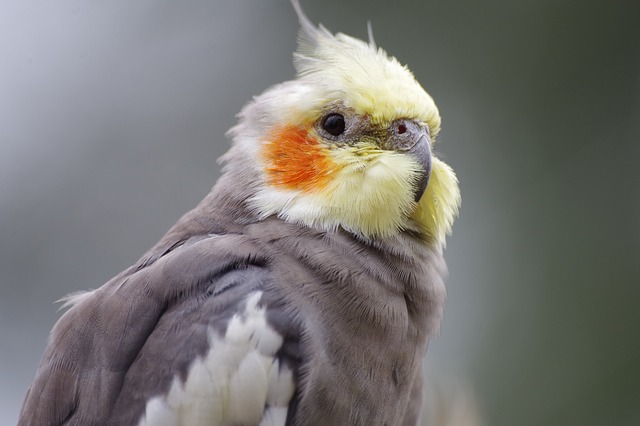Yes, much like all birds cockatiels do molt. This is so they can replace their damaged feathers with newer, fresher more capable ones that will better shield them from the elements as well as let them fly more effectively if need be. Cockatiels molt semi annually depending on the weather, which can be anywhere from 7 – 14 day upto a few months.
Why Do Cockatiels Molt?
Cockatiels molt in order to replace old damaged feathers with newer more practical ones. This is because feathers will get damaged so, to maintain the ability to fly effectively (especially in the wild) cockatiels will need to replace their primary flying feathers on a regular basis.
Beyond just flight, newer feathers will also help cockatiels be better prepped to sustain itself through difficult weather conditions. It’ll be more effective in colder conditions, wetter conditions and also them to be supported better in windy environments too.
Furthermore, it would help in protecting a cockatiel from any blunt force they may receive from a fight with another animal or as a result of a collision. Either way their previous feathers would have sustained some of form of damage therefore, these avians will need to shed in order to be more effective in do or die situations.
Newer plumage is also great for attracting the attention of potential mates.
How To Tell Your Cockatiel Is Molting?
You’ll notice that your cockatiel is molting when you start seeing feathers across its cage, a change in behaviour and due to their more rugged fluffier look.
Do note that cockatiels go through a light molt throughout the year but, a heavier molt can be observed if a ton of feathers are seen scattered across its cage floor.
In the wild when most birds molt, whether parakeets, lovebird, parrots etc. they would try to do so in private, away from others. This is because molting is a sensitive period within their year.
The feathers of any bird is a core factor in how they do things therefore, when in this vulnerable stage cockatiels would find a place to lay low until they’ve molted completely.
That’s why around this time your cockatiel will not be as playful or chirpy. Instead it’s more likely that they’ll be fearful and even aggressive in some occasions.
In some cases you may even see you cockatiel preening their feathers too much causing discolouration. This is another way for you to understand if your cockatiel is molting.
How Long Do Cockatiels Molt For?
Cockatiels can molt for anywhere between 7 – 14 on the shorter side and up to 2+ months on the longer side. The time will differ depending on a number of factors, whether it be due to a potential illness that your cockatiel could be suffering from, if its their first time molting among a number of other potential factors.
The first adult molt for a cockatiel will occur roughly 6 – 12 months into their lifespan and thereafter they will molt regularly to replace their damaged feathers.
How Often Do Cockatiels Molt?
Cockatiels molt between 1 – 2 times a year although as mentioned previously they will still shed a small amount of feathers here and there throughout the year.
Heavy shedding is normally a 1 time thing and can even be twice a year based on how much sun they’re getting.
Wild cockatiels in that case would probably need to molt multiple times a year especially when you take into account their nomadic nature and the potential damage they’d receive to their plumage throughout the year along with the fact Australia is a very sunny continent.
Summary
Ultimately these little parrots do molt, it’s a necessary part of their survival as healthy would be helpful when attempting t =o fly away in a life or death situation.
Often Cockatiels will heavy molt 1 – 2 times a year based on how much sun activity they’re getting along with smaller incremental shedding throughout the year. In turn this means wild cockatiels will molt more often as Australia is usually very sunny.
Molting is a natural process for all birds so it’s no surprise cockatiels go through this too.
Amhil Khan, a dedicated nature enthusiast and the founder of BirdsOfTheWild.com, is a passionate advocate for the captivating world of avian wonders. With a deep-seated curiosity about the intricate lives of birds, Amhil’s journey began as a fascination and has evolved into a mission to inspire others to appreciate and protect these magnificent creatures.
Amhil’s love for birds led to the creation of Birds of the Wild, a platform where his expertise in ornithology, coupled with his captivating storytelling, provides readers with an immersive and educational experience. Through his lens and words, he captures the essence of birds in their natural habitats, offering a glimpse into their behaviors, migrations, and the ecosystems they inhabit.

